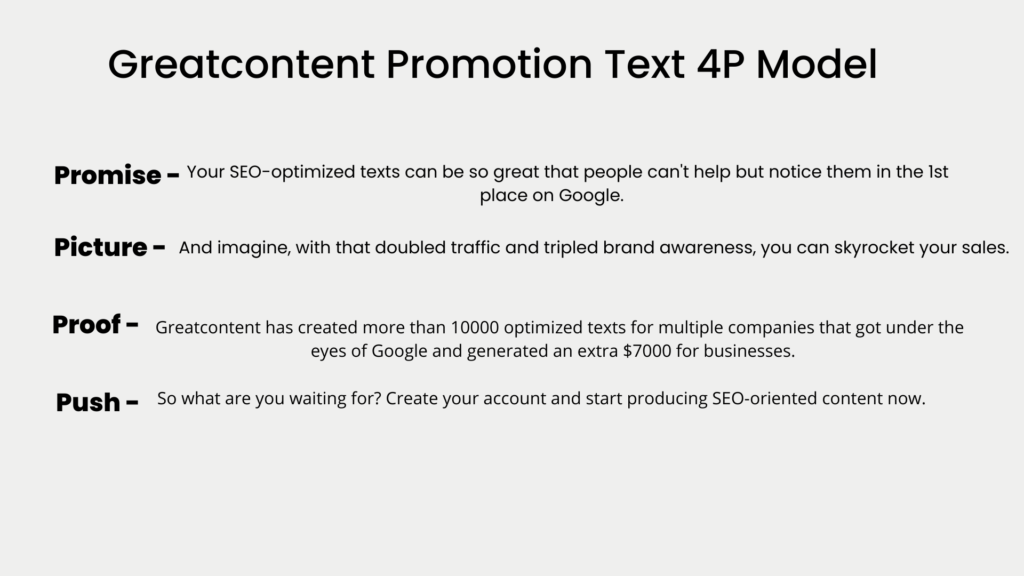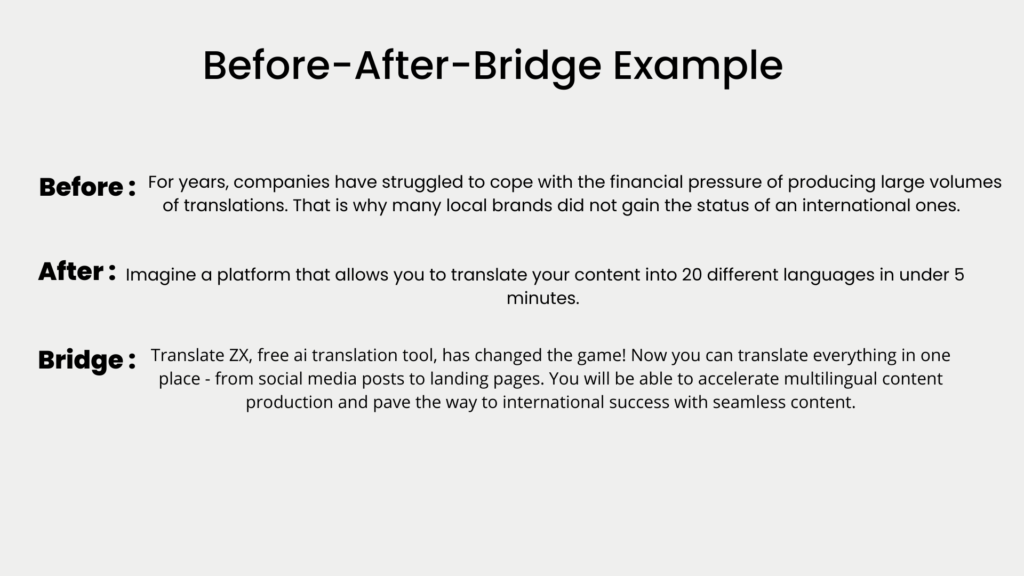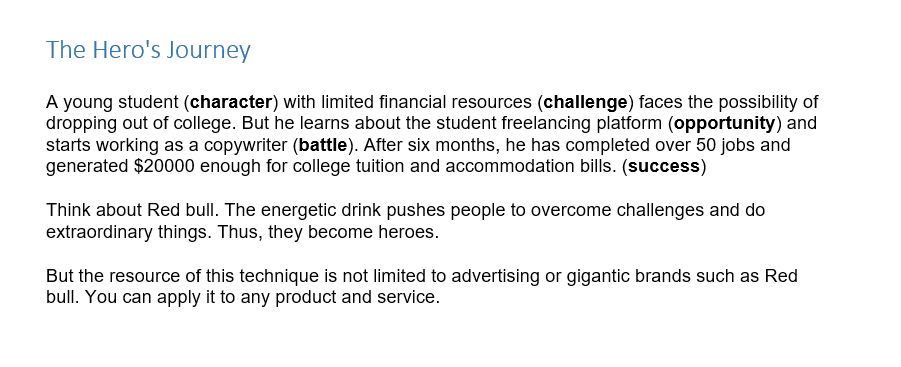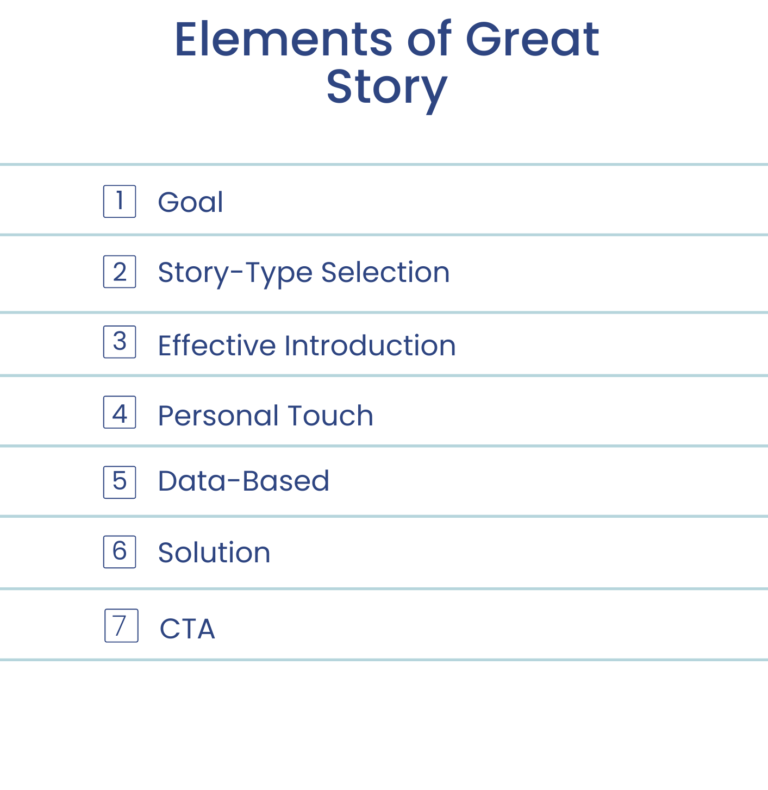
Everyone understands that stories are an important part of how our minds function. We are bombarded with stories from the time we are born, from simple children’s picture books to fairy tales, cartoons, YA fiction, novels, and movies. So it’s no surprise that we tend to interpret the world in the same way. We try to fit our actions into the story of our lives and respond to others who do the same. We also use stories to help us understand and process facts we learn from others.
In this blog, we will look at the power of storytelling in content marketing while also incorporating some science. As we’ll see, companies that learn how to tell stories frequently live ‘happily ever after’. Let us find out more.
What is Storytelling and the art behind Storytelling?
Storytelling is the interactive art of using words and actions to reveal the elements and images of a story while encouraging the listener’s imagination.
Storytelling is an art as well as a science. When we hear a moving story, we release the hormone oxytocin, which increases trust and empathy. Thus, compelling stories serve as motivators and have a positive influence on people’s behavior. The art and power of storytelling can influence human behavior, instill loyalty, and motivate people to take specific actions.
Individuals live through stories, and everyone enjoys sitting down with friends to hear their compelling stories. People also enjoy reflecting on their memories and creating interactive narratives.
What Is Storytelling in Marketing?
Brand storytelling is the cohesive narrative that weaves together the facts and emotions that your brand evokes – Forbes.
Why is Storytelling Important for Marketing and Business?
As brands face more competition, it is becoming increasingly difficult to capture an audience’s attention. Customers are exposed to thousands of pieces of content and advertisements per day, resulting in shorter attention spans.
We all read content with our eyes, but we also connect with our hearts. The best way to make customers feel that way is to incorporate stories into your content marketing strategy.
Yes, this is correct! You can use the power of stories to boost engagement and build customer relationships. Instead of stating typical features and sales pitchy details, try creating value-driven content embellished with stories.
1. Stories Capture Attention
How many of you know that every year people see 5.3 trillion ads? Okay, let’s shock you even more! There are more than four million new blogs every day! So, you need to stand out in this very competitive world.
People are more likely to pay attention to things that use stories in marketing. Stories are naturally interesting to people because they help them understand things like math problems or large amounts of data.
When trying to understand new ideas, stories can help you get past the confusion. They can also give brands a human touch and make them easier to relate to. Apple’s marketing has used stories a lot to show how their products help customers, and even people who aren’t tech-savvy can understand them.
2. Stories Are More Memorable
According to recent studies, stories help people remember information better. Furthermore, we are 22 times more likely to remember facts delivered in narrative form.
Humans are hardwired to pay greater attention to stories. Stories enable us to connect with the community on a personal level, as brands become more human to customers.
3. Stories Showcase Your Human Element
Story detail makes brands more relatable in marketing. Stories are emotionally engaging and help people understand concepts.
Retelling stories creates a “meme” that spreads. Consider Apple. Apple is associated with “I’m creative, productive, and business-minded! The lesson is that content marketing fails if you can’t write engaging stories.
Marketing companies that use online storytelling connect with you, educate you, and boost your confidence.
4. Stories Push Readers to Action
Stories are among the most effective tools for engagement, inspiration, and motivation. You not only convey a lot of information but also elicit strong emotions from your readers.
Assume you write a blog about SEO optimization. Rather than just including complex and industry-related texts, you use stories to describe the person who struggles to rank the articles while also making readers feel welcome and heard. Thus, you will gain the audience’s trust and move closer to conversion.

Techniques & Examples of Storytelling
AIDA – Attention Interest Desire Action
Attention Interest Desire Action (AIDA) has been an effective communication method in marketing for decades. It outlines a four-step process for effectively delivering message details to your target audience.
Attention – the most decisive part is to gain someone’s attention in seconds. There is no time for longer introductions as customers’ attention spans are lower.
Try to research your community’s problems and passions that make them want to explore more.
- State biggest myth in niche – keyword stuffing works!
- Begin with a stat – Over 4 million blogs are published in SERPS, and you will be the one ranking in SERP
- Make bold statements – SEO is dead!
- Ask if your audience wants to achieve something – do you want to generate 2x more traffic on your webpage? then read this
- Start with an unusual story – I was walking down a street and heard that ……
Interest – As you successfully get readers’ attention, you will face a more complex mission – to hold them on your webpage.
So, the most important thing here is to gain engagement and the reader’s empathy. How can we achieve it?
- Use conversational writing
- Address readers pain points
- Describe the situations familiar to them
- Develop a story
Desire – so, your readers are going nowhere, and now you have to shove how you solve their problems. Try to outline the benefits of making customers’ life easier!
Action – the last step is getting your customers to act! No surprise, as each marketing material aims to convert its readers. So try to create a sense of urgency.
iPhone Storytelling Example (AIDA)

4P
This technique looks like AIDA but offers more expansivity. The 4P order consists of
Promise – make a promise to your community and aim to catch their minds. So, try to explain what is in for customers and keep it real throughout the text.
Picture – next stage requires turning your creative copywriting skills on and painting a picture with descriptive and engaging words. Inspire people to walk in the shoes of others who appreciate the benefits you provide.
Proof – only with mastery of writing you won’t get far! The missing detail that will turn your text into excellent material is proof-data storytelling. Only this way do you achieve authority and trustworthiness. Use stats, and infographics, cite other reliable sources, etc.
Push – every persuasive writing keeps the goal and ending in mind. Again, you’ve produced a perfect copy and ticked all the boxes. But if you forget your call to action, all your efforts will be wasted.
4P Storytelling Example

Before-After-Bridge
BAB guides readers from a tough situation to a better one. With this order, you invite the reader to capture the ideal scenario and help you get there.
Before – you start to describe an existing problem. From here, readers should identify themselves in that situation and understand that the issue you are telling is their reality.
After – show your curious readers how the perfect solution would change their lives. Emphasize a benefit that readers want most!
Bridge – give your customers a specific solution as a bridge between the two worlds.
Before-After-Bridge Example

After-Bridge
Also, some companies prefer to start on a positive note and describe the ideal situation. Imagine the movie storytelling in reverse order. It reveals the happy ending and then guides readers.
After-Bridge E-Mail Example

The Hero’s Journey
From Sherlock Holmes to countless adventurous books and films, Joseph Campbell’s 1949 classification of a hero’s journey holds true.
When you use this method to create content, you are guiding your audience through their own hero’s journey. It is one of the best ways to increase engagement.
Content marketers should try to cast the customer as a hero and present the product as the magical attribute that will help them achieve their goals. Just like Harry Potter and his magical wand.
Create your customer experience journey by involving your target audience, who faces the challenge of achieving their desired outcome.
Follow this structure:
- The mighty hero has a problem/challenge
- The hero decided to face overcoming challenges
- The hero succeeds
Outline these elements:
- Character
- The Challenge
- The opportunity
- Battle
- Success
Think about Red Bull. The energizing drink motivates people to overcome obstacles and achieve extraordinary feats. As a result, they achieve the status of heroes.
However, the potential of this technique is not limited to advertising or massive brands like Red Bull. You can use it on any product or service.
The Hero’s Journey Example

Marketing Storytelling – What Are the Elements of a Great Marketing Story?
Goal
Always have a goal in mind while writing a piece. Thus, every content writer should define the aim behind their activity. The list of goals may vary between:
- Selling the product
- Introduce yourself
- Push discussion
- Convey values
- Explaining Service
- Educate your community
- Engage people involved in some activity
Also, you need to understand where your customer is and where you plan them to transform:
- What they will know after reading your copy
- What will change for them after receiving the information?
- How will they act after content consumption?
Choose the Type of Story
- Story of self – tell a story about yourself or your company. Include personal experiences, struggles, and successes. It will help you place a human touch on your company and express its authenticity.
- Knowledge-oriented – write about the knowledge that will help your customers implement the actions to overcome challenges and painpoints. So, readers can learn new things and feel valued.
- Action-oriented – we meet this type of narrative in success stories, where individuals or companies tell about their victories and actions that helped them throughout the journey.
- Value-driven – it taps into emotions and situations familiar to your community. This method presents a brand character and lets customers know your intentions.
Introduction
The introduction reveals the story’s central message, which captures the reader’s attention immediately. You will attract attention if you put yourself in the shoes of the customer and base your introduction on a challenge that is relevant to your audience.
The reader will have a mirror experience, which will result in an empathetic feeling of “like me”. It happens because they have encountered the aforementioned situations and are likely to continue reading.
When writing the introduction, remember to:
- Keep the first sentence short
- Use the word you to get personal from the beginning
- Describe what you offer to readers shortly and why your writing is important
- Emphasize the problem that your audience has
Personal Stories for Personal Touch
You may explain the issue seamlessly and describe how your knowledge makes customers’ life easier. But without conversational writing, it won’t hit the expected marks.
- Talk about a funny moment that changed the way you think about the issue
- Explain how you overcame the problem and what has pushed you to reach that point
- Describe the failure that got you to success.
So, Aim to be more than an information-sharer and write as a reader’s friend to achieve the point of loyalty.
Data Storytelling
It is critical to always keep data in mind when telling stories and describing issues. Stories are entertaining and draw the reader into the article, but don’t forget to back up your arguments with specific data and sources.
As a result, your writing will sound more informative, authoritative, and compelling.
Solution
At the end of the story, you should always give customers solutions to their problems. Therefore, your brand will be seen as a hero.
CTA (Call to Action)
Guide your readers to the next step with an easy-to-read and clear CTA.
- Be commanding – you’ve just read several bossy or imperative verbs: read, follow, create, tell. Tell people exactly what to do, and the chances are, they’ll do it.
- Make it emotional – target enthusiasm, talk about dreams and say you’ll improve lives. Use an exclamation mark for an extra emotional punch.
- Get personal – don’t underestimate the power of personal pronouns. I’m talking to ‘you!’ not a nameless face.
- Dare to be negative – don’t say ‘Get Fit Now!’ trigger a click with ‘Tired of having no energy?’
- Use numbers – the brain loves discounts and low prices. The brain loves the word FREE even more!
- Fear of missing out – everyone’s afraid of missing out on something life-changing. Try to pile on the pressure with un-refusable offers or time limits for action.

Brand Storytelling – How to Develop Stories that Shape Brand Identity?
Understand Your Audience
To create content that converts, you must understand who you are writing for and what your audience wants.
First, you must identify your target audience. You may write exciting and engaging stories that do not appeal to your intended audience.
- Who is your audience?
- What do they want to know?
- What are their pain points?
Once you answer all the questions, start developing topic ideas and stories that shape your brand identity.
Keep Your Writing Simple
For better engagement, It’s also crucial to keep your story simple and easy to understand. The fewer words in a story, the easier it is to digest and remember.
Avoid:
- Technical jargons
- Acronyms
- Complex sentences
- Redundancies
Outline the Problem You Solve and Solution You Offer
Consider great companies like P&G, Apple, and Microsoft. What do they have in common. They resolve issues and make customers feel better. Apple’s multifunctional smartphone iPhone revolutionized the mobile phone concept. Microsoft’s release of Windows made significant contributions to the advancement of computer technology.
It is critical to lay the groundwork for a successful branding strategy by defining the core problem you solve and disseminating the message through various channels.
Perceive Your Brand Like a Person
When you think about your company, do you picture a person? If not, you should begin thinking about it in that manner.
Consider the brand as a person with various values and principle packages. Do the same for your brand: define why it exists and what you want to achieve, and then plan actions to get there.
But, like people, brands have two sides: emotional and rational.
- Rational – should tackle the problems and painpoints
- Emotional – personality and behavior. Explain how it interacts, educates, and entertains. This emotional side will be expressed internally (in the company culture) and externally (during communication with customers)
Brands are like people, and people are like brands. Just as people have different personalities, so too do brands.
- Think about how you would describe your company in terms of personality traits. Are you fun and quirky, or are you more professional? Do you focus on customer service, or do you emphasize quality products?
- Once you understand your brand identity and who it isn’t, start shaping your marketing materials around that persona. Be sure to use language that resonates with customers and makes them feel like they’re getting to know the person behind the logo.
- Your website design should also reflect your brand’s personality. If everything looks slick and polished, customers may perceive you as stiff and unapproachable. However, if your website is fun and quirky, that’s the image you’ll want to project.
Create & Develop Your Brand Character
What is a brand character?
A brand character is the personality of a company or product. It can be expressed through the company’s voice, logo, and overall marketing strategy.
How Do You Develop a Brand Character?
- Define the core values of your company
- Decide what value you should outline and communicate with your audience
- Develop the story about the emphasized values
- Fix the problem and offer the solution
- Understand how this solution makes your reader feel
- Create the style guide to keep your brand style the same across all the channels
- Identify the actions that will help you present your unique brand style – social media activities, SEO, etc.

Types of Stories to Use in Content Marketing
Brand Story
- Brand story – here, you can explain the reason behind your existence.
- Founder’s story – express the human element of the brand and introduce the people who inspired the foundation of your business.
- Industry story – tell readers about your industry’s current state, why you choose to involve and how your brand can improve it.
- Value-oriented story – explain the common purpose that unites your founders, employees, and the product
Customer Story
- Customer satisfaction stories – showcase the social proof of your product or service and let others speak about your benefits.
- Customer interviews – this type of story brings a conversational style to your blog arsenal.
Educational Story
- Blogs – educate your readers using stories.
- Interviews with Experts – this way speaker will share their personal experiences with your community.
- Quizzes – engage better with your customers through interactive quizzes and make the learning process fun.
Product Story
- Story on product features and benefits – create a piece of content that will creatively represent how the product benefits your customer.
- How to use a product in the story – guide readers engagingly with your original instructions.
- Why use a product story – explain what inspired you to create the product you own.
- Testimonials – Yes, we have already mentioned them in the customer section, but it also belongs to the product stories.
Inspirational and challenging story – Nike: Just Do It. No more words are needed.
Occasional Stories
- Holiday stories – various companies utilize the opportunity to develop stories around holidays. Do you remember the history of coca-cola with Christmas? They have revolutionized the marketing industry. Also, If you are a b2b content writing company, explain to customers how to develop seasonal content.
- Event stories – select whatever suits your brand the most – starting from World Animal Day to Global Entrepreneurship Week, and tell stories around it.
Storytelling Examples in Marketing
Companies tell stories to construct relationships with their customers and lay the foundation of long-term loyalty. Here are four examples of successful stories that build relationships and brand loyalty.
Nike – Just Do It
Nike’s iconic Just Do It campaign launched nearly thirty years ago featured famous athletes talking about their accomplishments, desires, and emotions during the journey.
See the first-ever Nike Just do it commercial video :
The Just Do It campaign resonated deeply with the global sports community, inspiring featured athletes and regular customers to give their all to achieve their goals. The Nike brand is built around the idea of self-improvement and overcoming obstacles. Its customers are individuals who strive to be the best they can be, both physically and mentally.
Nike uses storytelling in its marketing messages to appeal to this market, including videos, ads, and images. This strategy enabled Nike to build relationships with customers that extended beyond shoe sales.
Nike also engages its audience through social media platforms such as Instagram and Twitter. These channels allow users to share their own experiences with Nike products that have helped them achieve their goals.
Apple – Think Different
As previously mentioned, Apple is a company that has transformed the marketing industry.
Their “Think Different” campaign was one of the most effective marketing campaigns. Apple creates a compelling brand narrative and tells intriguing stories.
According to Steve Jobs, the goal of this one-of-a-kind campaign was to show that “you always had to be a little different to buy an Apple computer.” The campaign featured Albert Einstein and Martin Luther, two people who changed the world.
Check Apple’s iconic – Think Different Video here:
Manchester City – Anyone Can Be a Star
Manchester City’s Anyone Can Be a Star campaign aimed to bring together fans and players from all over the world to celebrate victories.
Manchester City profiled top women’s goal scorer Georgia Stanway as part of a series on key players at the club. The story is not only about her latest successes or game statistics, but it also tells the story of how an ordinary young girl became a global celebrity.
Readers will identify with Stanway’s story about her childhood and fight, which reinforces Manchester City’s brand narrative of being committed to women’s sports, encouraging young players, and improving access for all.
Ikea – What If?
Ikea is renowned for its captivating videos that resonate with its target audience. The Swedish company’s content strategy reflects on – show, don’t tell!
The “What If” commercial perfectly portrays the brand’s mission for sustainable and innovative features. That way, Ikea sells solutions to make them a world better place to live in.
Check the video here:
FAQS
What Makes a Good Story?
Every good story should include these components:
- Characters – the imaginary character gives a bridge between you and the target audience. They should put themselves in the character’s shoes and follow you throughout the text.
- Conflict – gives you the challenge that keeps you engaged in texts. The struggle creates drama and makes readers stay on track with your text. Without it, everything is in the ideal place and not engaging as the challenge thrown to the audience.
- Resolution – finally, you should tell the audience how the character tackles the challenge. You have been building the momentum to reveal clear and direct solutions.
What Are the Skills/ Qualities Great Storytellers Have?
1. Tireless Learners – great storytellers have the habit of reading other writings, listening to different stories, and trying to improve on a daily basis.
2. Leaders – successful storytellers are great leaders with the ability to take the initiative and guide their followers in a specific direction.
3. Strategic Thinking – this skill will help you to mix storytelling and business goals.
4. Empathy – every storyteller focuses on other peoples thinking and feeling. That way, they can better understand their audience and tailor content to them. (choosing impactful words, selecting story type, and more.
5. Impression Detectors – storytelling gurus feel how stories could impact the community and what kind of feelings they can arouse.
6. Creativity – it unlocks the potential to express ideas and thoughts in a personal and original way.
7. Speaking – storytellers have the ability to speak confidently and fluently in front of listeners.
8. Writing – people with exceptional writing skills can paint the picture with words and keep readers on the edge of their sits.
How to Write Engaging Stories?
1. Create the outline
2. Highlight the main points your want to include in your story
3. Make your writing personal
4. Use hooks to attract readers’ attention
5. Keep your writing simple and concise
6. Introduce conflict
7. Emphasize emotional details
What Are the Resources & Tools for Storytelling?
1. Canva – for visual storytelling
2. Anchor – for podcast creation
3. Adobe Spark Video – for video storytelling
4. Ceros – for the creation of infographics
How Can You Use Storytelling in E-mail Marketing?
You can incorporate stories into every e-mail marketing campaign and improve the readability and engagement of e-mails by using the copywriting techniques described above.
Typically, content marketers use storytelling for existing users or warm leads to establish the first connection. After you’ve subscribed, you can personalize your e-mail communications.
Storytelling also works well in promotional e-mail campaigns, where thematic stories can be developed around holidays like Christmas or Halloween.
Takeaways
You’re probably telling yourself a story right now, and hopefully it’s one about how to incorporate storytelling into your brand strategy! The truth is that everyone, from tech giants like Apple to budding start-ups, tells themselves stories.
